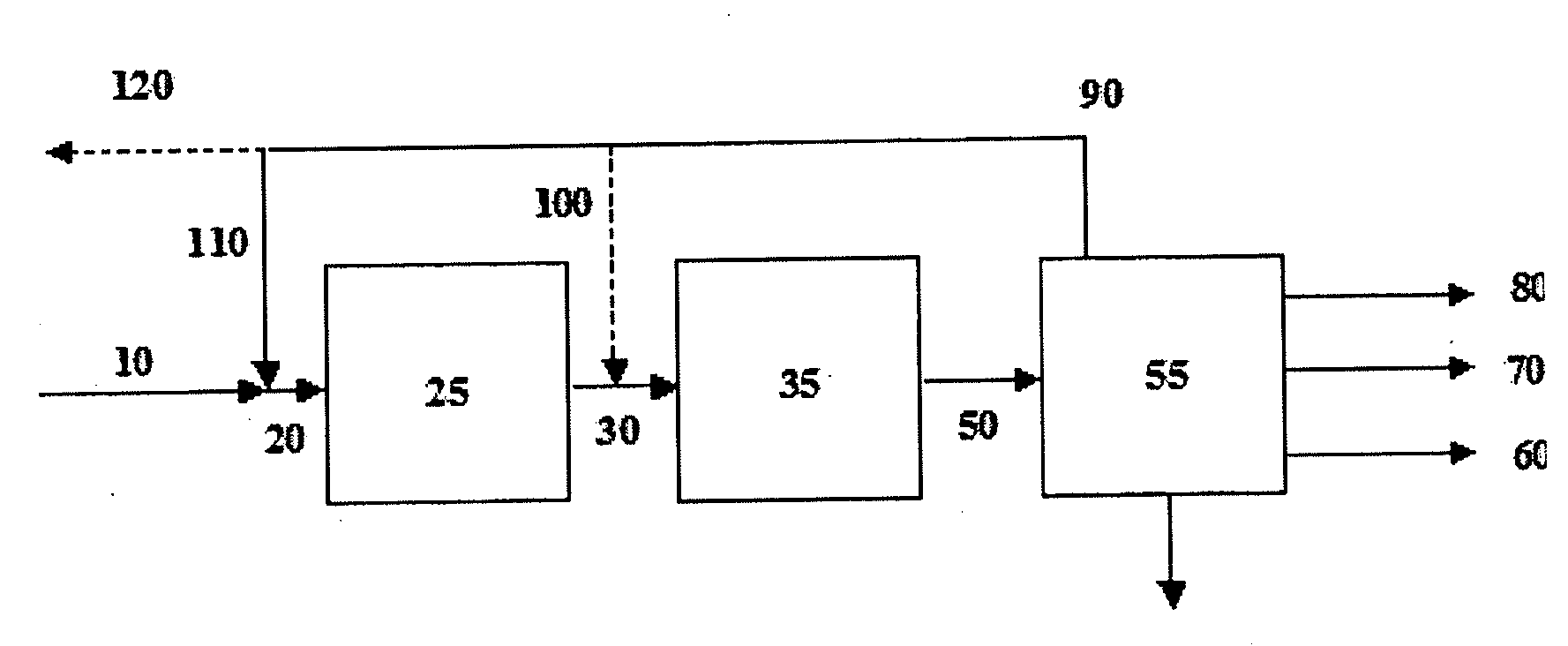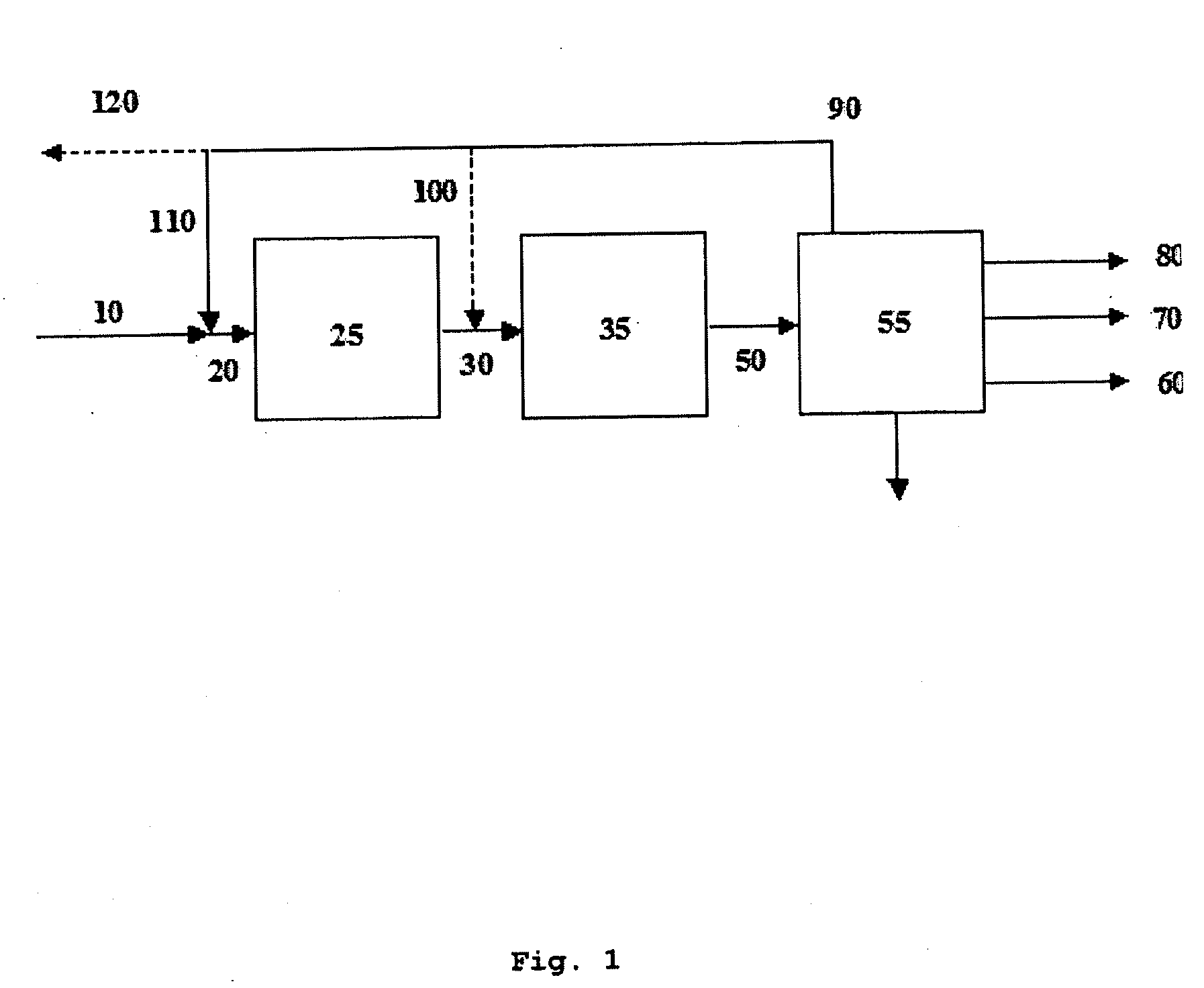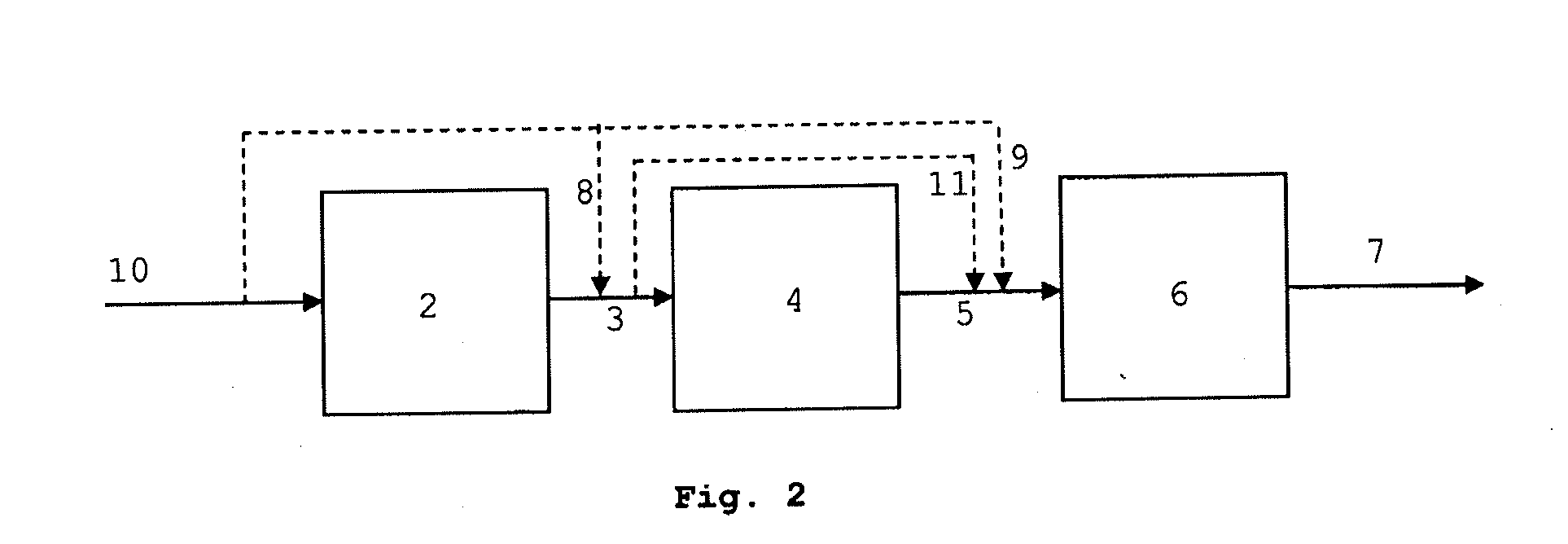Process for the synthesis of hydrocarbon constituents of gasoline
a technology of hydrocarbon constituents and gasoline, which is applied in the direction of hydrocarbon oil treatment products, organic chemistry, chemistry apparatus and processes, etc., can solve the problems of excessive gasoline production price, adverse effects on gasoline yield, increase of feedstock price, etc., and achieve high yield
- Summary
- Abstract
- Description
- Claims
- Application Information
AI Technical Summary
Benefits of technology
Problems solved by technology
Method used
Image
Examples
example 1
[0130]A series of experiments were carried out in a quartz reactor of 4 mm inner diameter. 250 mg of HZSM-5 zeolite catalyst (150-300 μm sized particles) was mixed with 500 mg of silicon carbide, SiC and loaded into the reactor.
[0131]Five different feeds were used as shown in Table 1:
TABLE 1FeedOxygenate content (mole %)17% methanol in N227% of a 70 / 30 mole % methanol / ethanol mixturein N237% of a 70 / 30 mole % methanol / 1-propanol mixturein N247% of a 70 / 30 mole % methanol / i-butanol mixturein N2
[0132]The reaction conditions were atmospheric pressure and temperatures ranging from 250-370° C. and flow rate of 60 Nml / min and 105 Nml / min., respectively, corresponding to a WHSV of 1.4 (industrially typical) and 2.45 g / g catalyst h.
[0133]FIGS. 4a and 4b show the total conversion of methanol and dimethyl ether as a function of the isothermal operating temperature and FIGS. 5a and 5b show the yield of C5+ products as a function of the isothermal operating temperature.
[0134]As can be seen in F...
example 2
[0138]This is an example which demonstrates one of the fundamentals of the invention namely the obtained effect of a reduction in the temperature at which conversion occurs.
[0139]Example 1 was repeated. However, while maintaining a concentration of 7 mole % of methanol in the mixture with nitrogen, a further mixture of higher alcohols (HA) with the specified composition as shown in Table 2 was added. The mixture of higher alcohols was added at different rates expressed through its wt % to the methanol fed at values between 0.1 to 35 wt % of HA. Ethanol does not fall under the definition of C3+ higher alcohols, but has been included for comparative reasons.
TABLE 2HAMole %ethanol13.45n-propanol12.97i-propanol3.01n-butanol8.692-butanol3.47i-butanol41.13n-pentanol7.89n-hexanol9.41
[0140]Similar higher alcohol mixture is obtainable from conversion of synthesis gas according to U.S. Pat. No. 4,668,656. The flow rates were 60 Nml / min and 150 Nml / min. corresponding to a methanol based WHSV o...
example 3
Comparative
[0145]This example is not according to the invention. It serves to demonstrate that conductance of an integrated oxygenate process as described in U.S. Pat. No. 4,076,761, where the oxygenate synthesis step is a methanol synthesis with byproducts does not bring about the effects needed for fulfilling the object of the present invention.
[0146]Above experiment was repeated. However, the pure methanol solution was replaced by a raw methanol solution composed through the addition of the higher alcohols as shown in Table 3. The composed raw methanol solution represents a typical composition from a state-of-the-art methanol plant.
TABLE 3HA in raw methanolConcentration (mole ppm)ethanol4871-propanol752-propanol321-butanol402-butanol11
[0147]As can be seen in the results shown in FIGS. 7a, 7b, 8a and 8b in the composition denoted “raw”, the conversion of methanol, when containing the conventional level and distribution of higher alcohols, is not distinguishable from the conversion...
PUM
 Login to View More
Login to View More Abstract
Description
Claims
Application Information
 Login to View More
Login to View More - R&D
- Intellectual Property
- Life Sciences
- Materials
- Tech Scout
- Unparalleled Data Quality
- Higher Quality Content
- 60% Fewer Hallucinations
Browse by: Latest US Patents, China's latest patents, Technical Efficacy Thesaurus, Application Domain, Technology Topic, Popular Technical Reports.
© 2025 PatSnap. All rights reserved.Legal|Privacy policy|Modern Slavery Act Transparency Statement|Sitemap|About US| Contact US: help@patsnap.com



